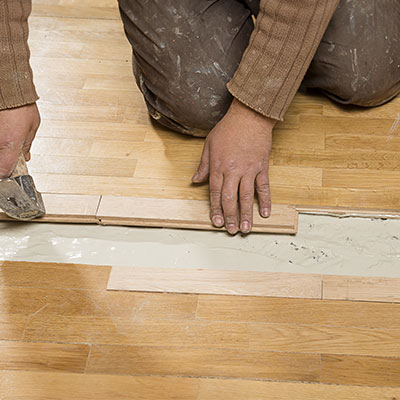27 Aug To Refinish Or Replace?
Hardwood floors are a luxe addition to any home. Their sheen adds a depth of elegant comfort that just can’t be beat. The key to preserving your beautiful wood flooring for generations is to care for their surface. After all, your flooring sees a lot of action: spiked high heels, scuttling pets, and scraping chairs wear down even the best quality hardwood flooring.
But how do you know when your floors just need a simple refinishing, versus an entire replacement? A replacement is a pricier but often necessary investment in your floors, while regular hardwood floor refinishing can be an affordable option to keep your floors looking pristine. Check out our guide to help you decide when to refinish versus replace.
To Replace Or Refinish?
It’s important to remember that refinishing is a regular part of hardwood floor maintenance.
Here’s the thing: regular refinishing is needed on your floors every 1 – 3 years, depending on how much of a beating they take. High quality wood flooring is safe to refinish up to seven times, depending on the type of wood and how well it’s cared for. It’s natural to expect replacing your floors every 15 to 20 years.
That said, sometimes you might find sections of your floor that are damaged or in need of repair. When does it make sense to refinish your floors, and when does it make more sense to do an outright replacement?
Fortunately, most hardwood flooring issues can be fixed with a more affordable refinish. In fact, even old floors can be restored with refinishing. Insect damage, squeaky floors, and even holes can be repaired with patching and refinishing. Hardwood floor refinishing also will remove signs of daily wear, like scratches and dents.
However, you might need a complete replacement if you have more serious issues with your home or flooring. If there are structural problems with your home or foundation, the floor will likely need to be replaced after you address the structural problems.
While some insect damage can be patched and repaired, if the damage is to more than 30 percent of your floor, it’s best to replace it to maintain its integrity.
You’ll also need a replacement if you’ve refinished your floors five to seven times over the years. Refinishing is necessary, but it does wear your wood over time. A replacement ensures your floors stay strong and beautiful for the long haul.
Structural concerns aside, you also might want to replace your wood flooring if you’d like a different grain pattern, color, or design. Hardwood floors aren’t always replaced out of concern for function and structure; sometimes it’s about aesthetics. However, if you want to update the look of your floors, talk to a pro first. There may be more affordable options to get the look you want without a replacement.

The Bottom Line
Wood flooring makes your house feel like a home. If you take good care of your floors, they can take care of you for up to 25 years before needing a replacement. Generally speaking, regular refinishing will take care of many aesthetic concerns, preserving the look of your floors. If your home has any structural problems or damage, a replacement might be in order.
Not sure if you should refinish or replace your flooring? Give West Chester Hardwood Flooring a ring to chat with a professional.





Sorry, the comment form is closed at this time.